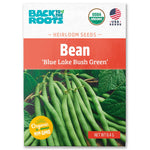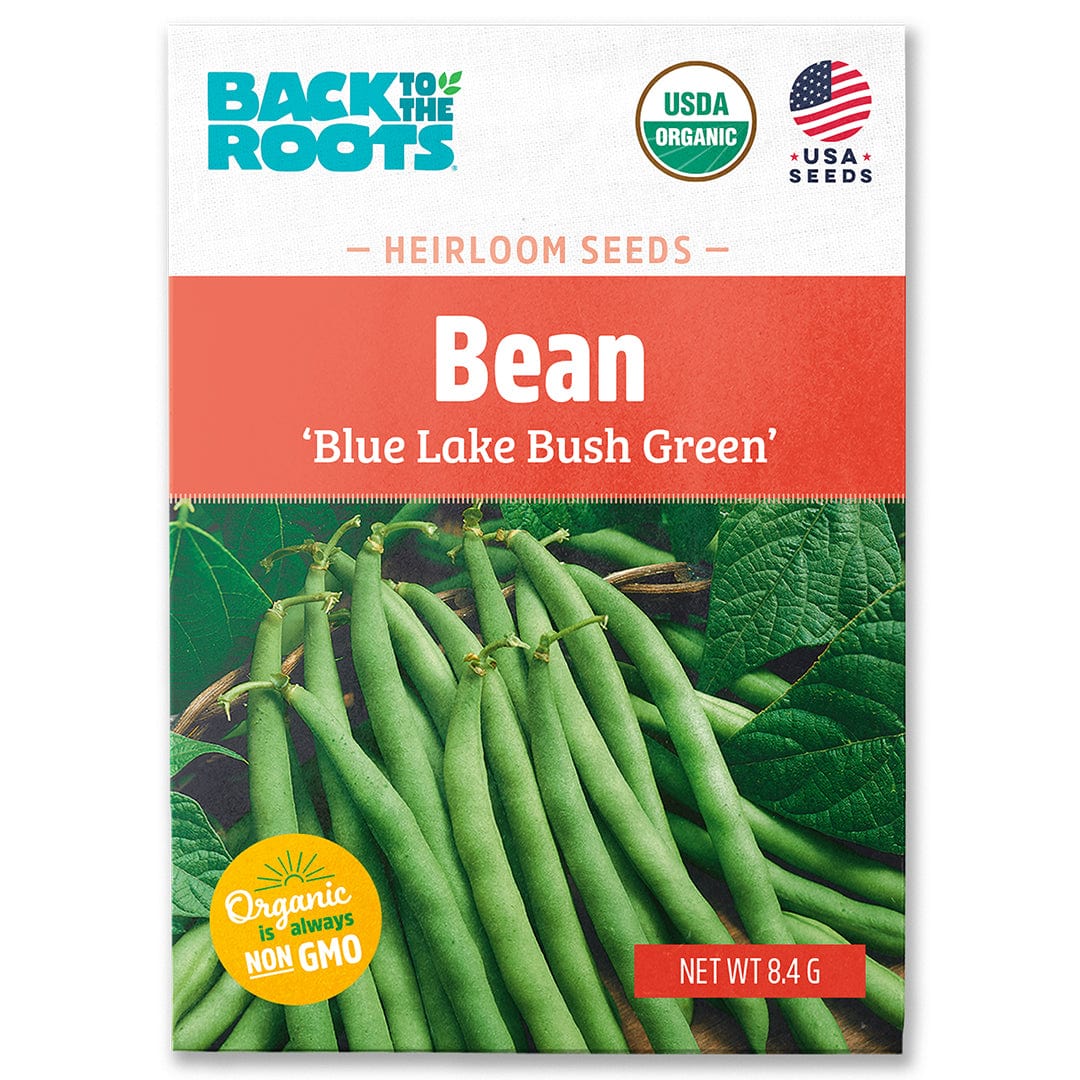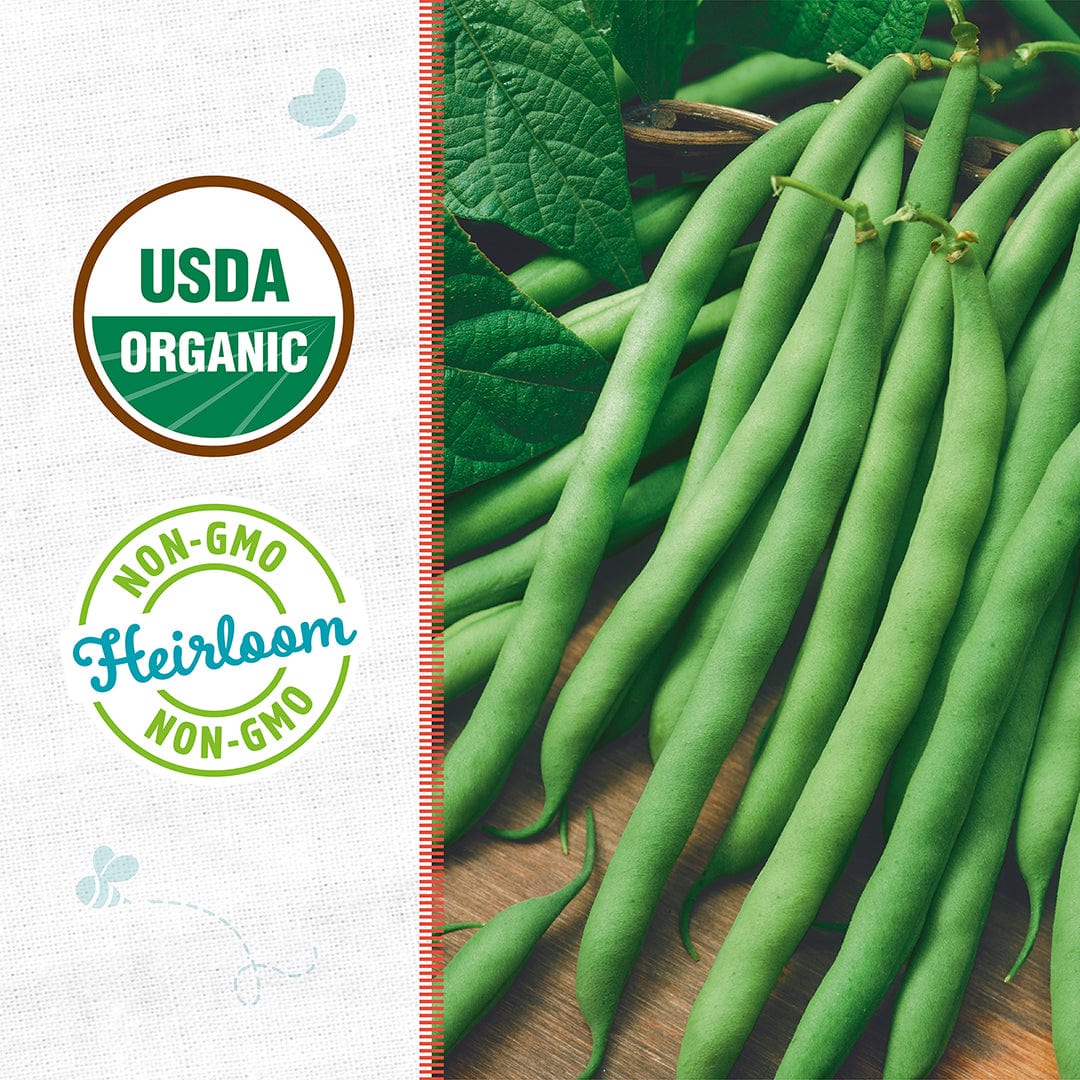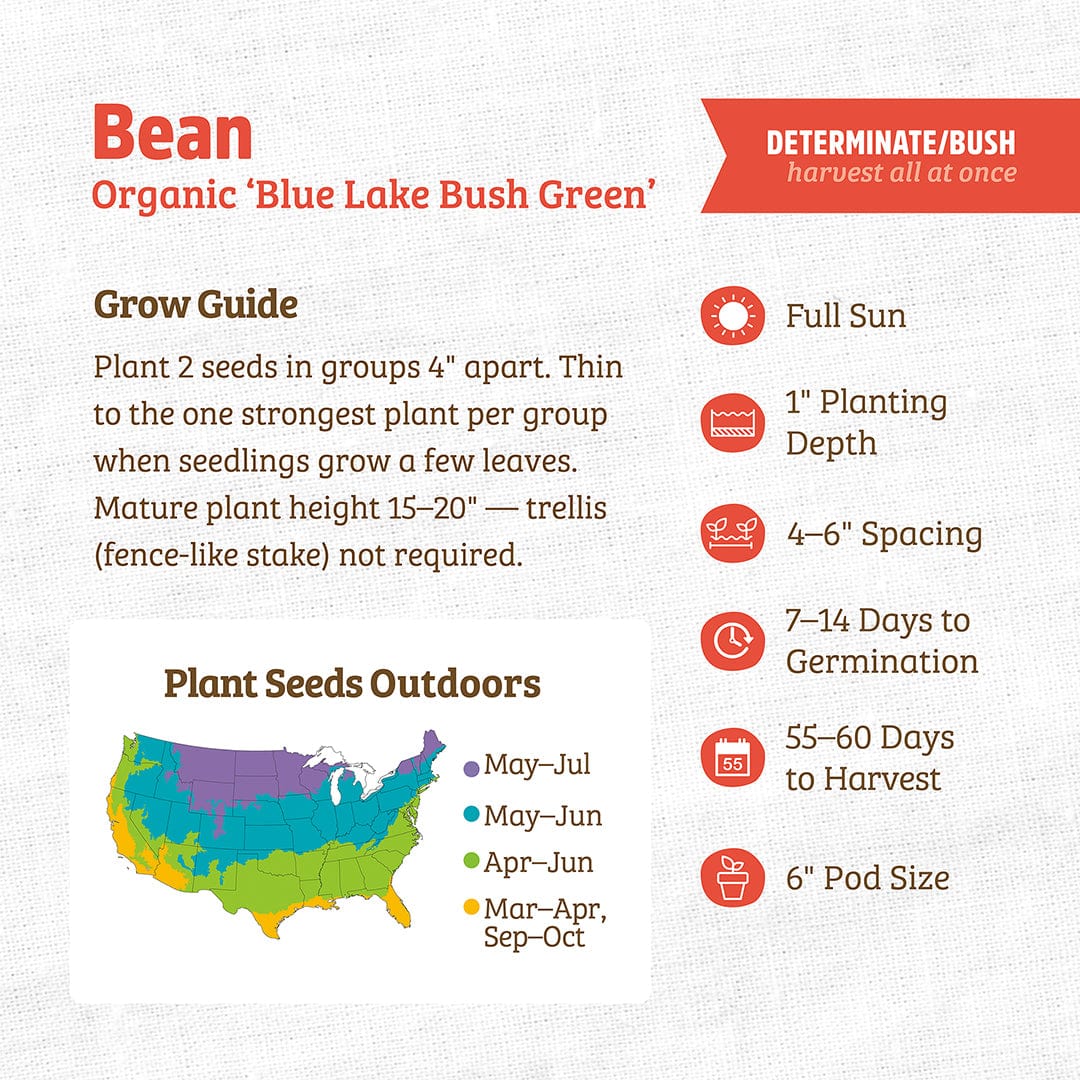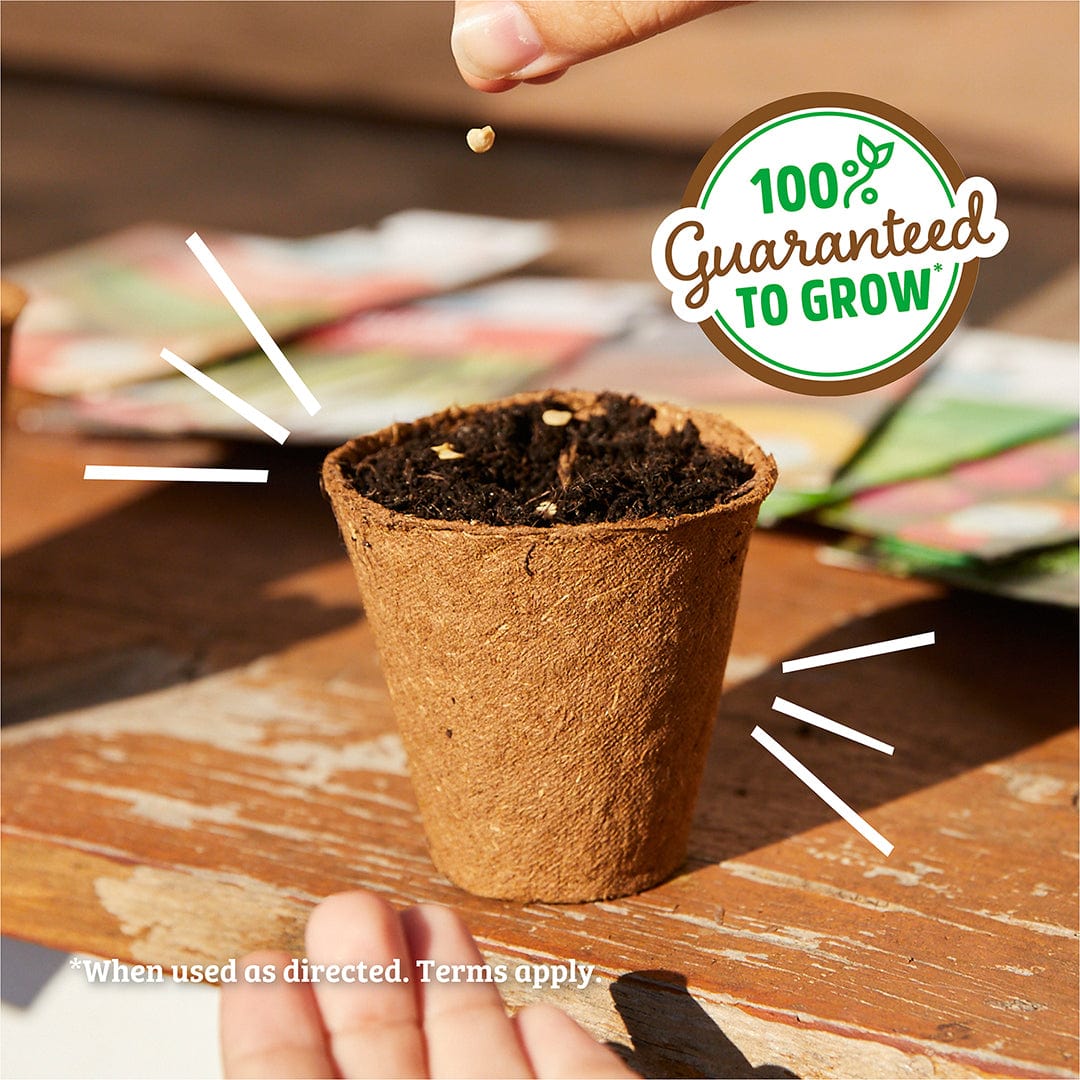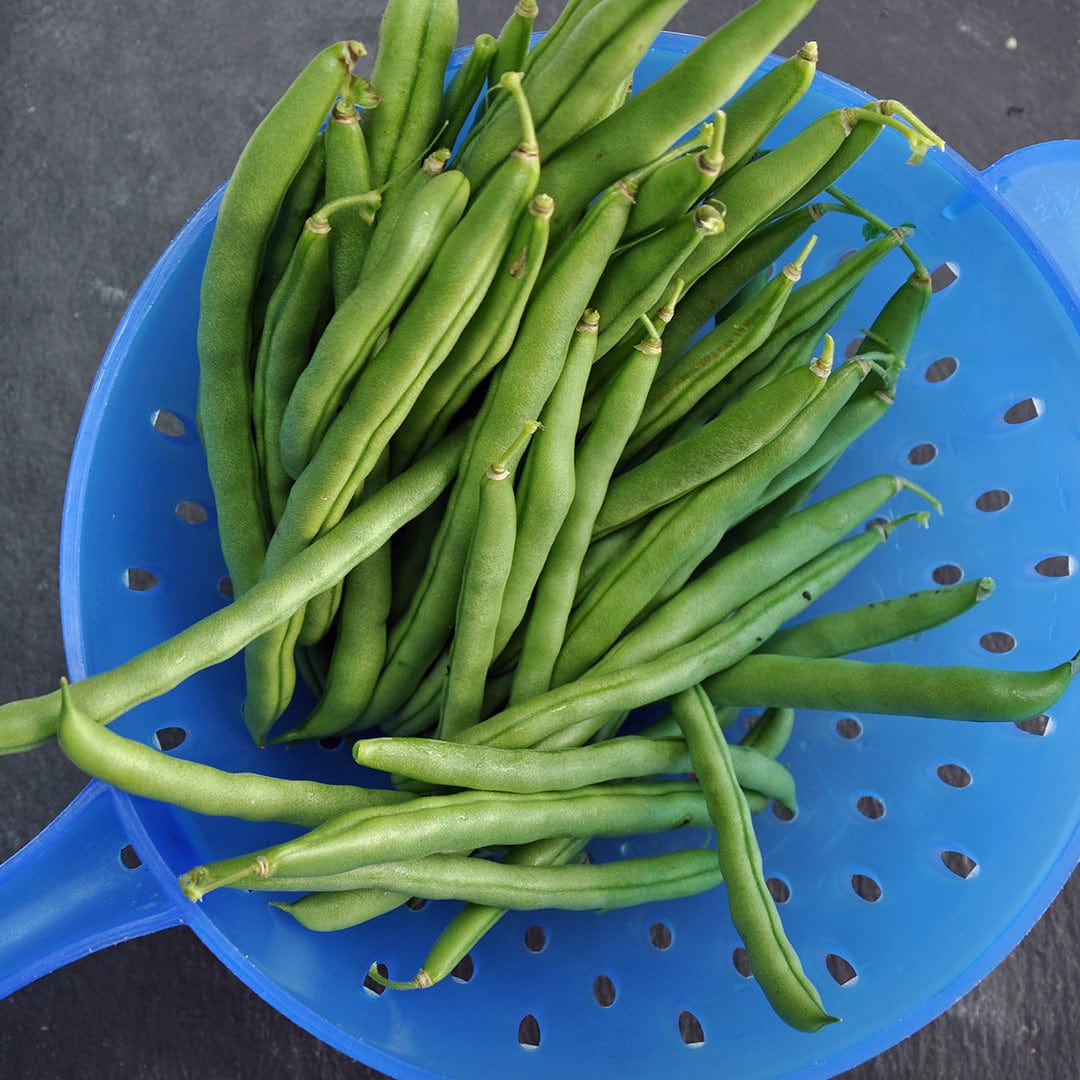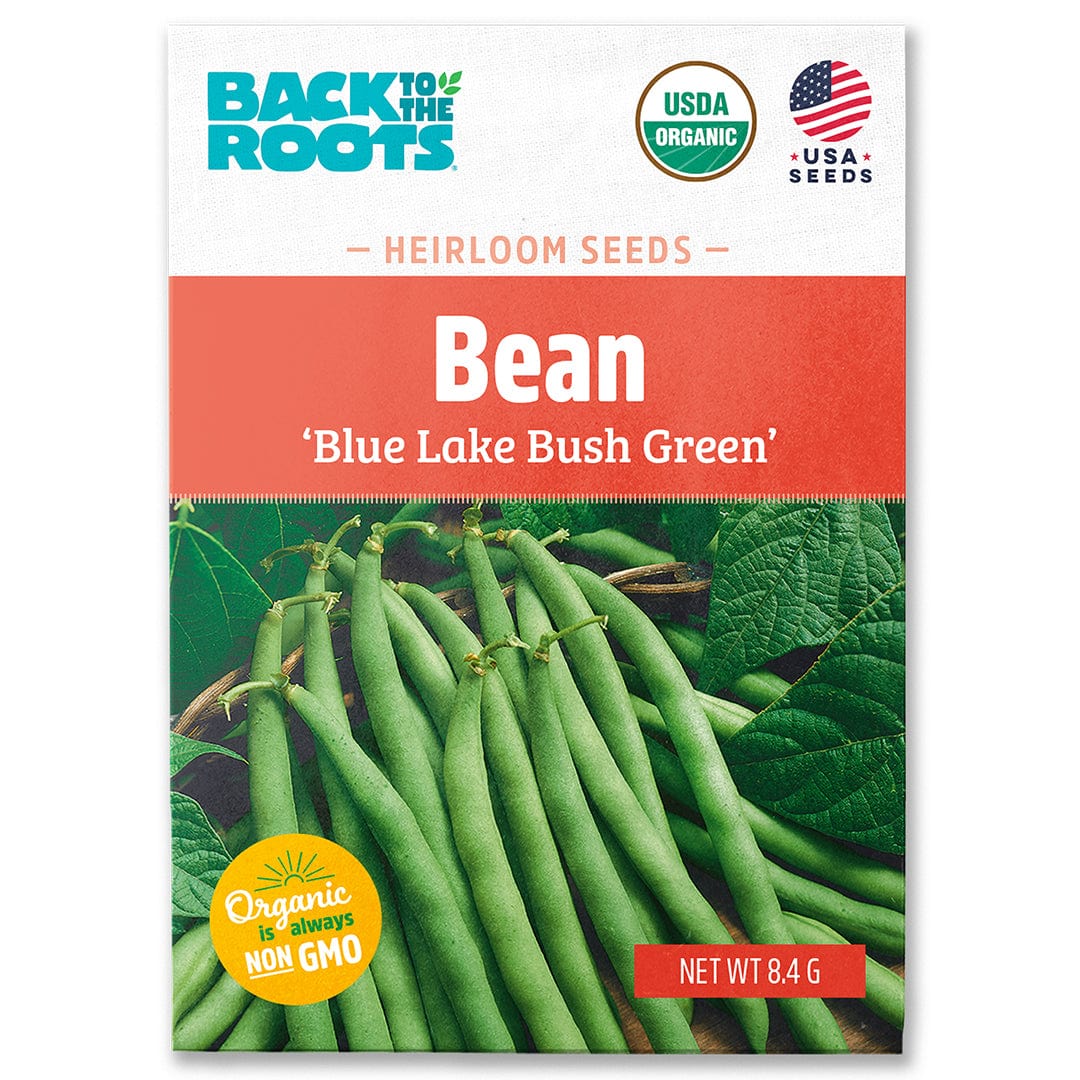
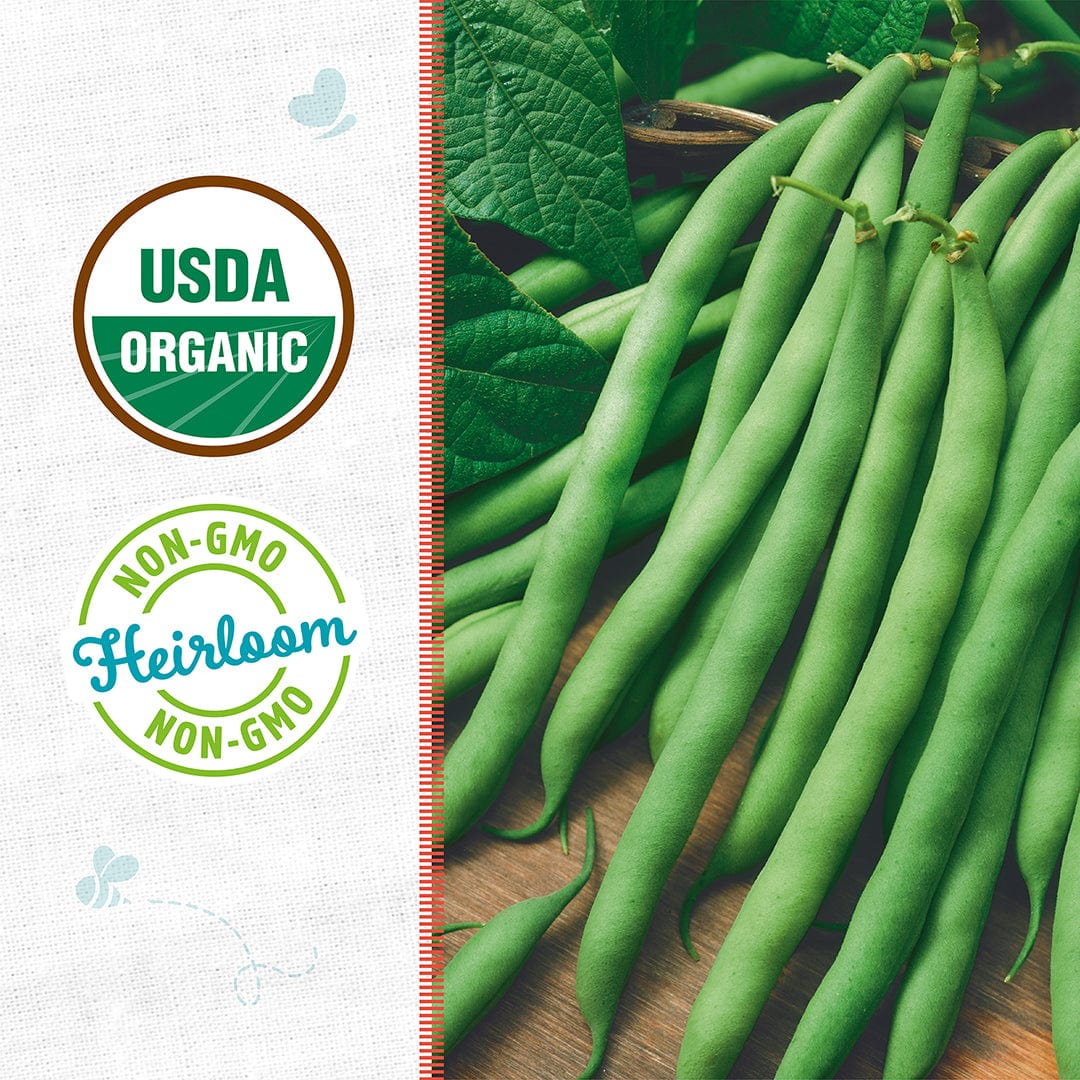

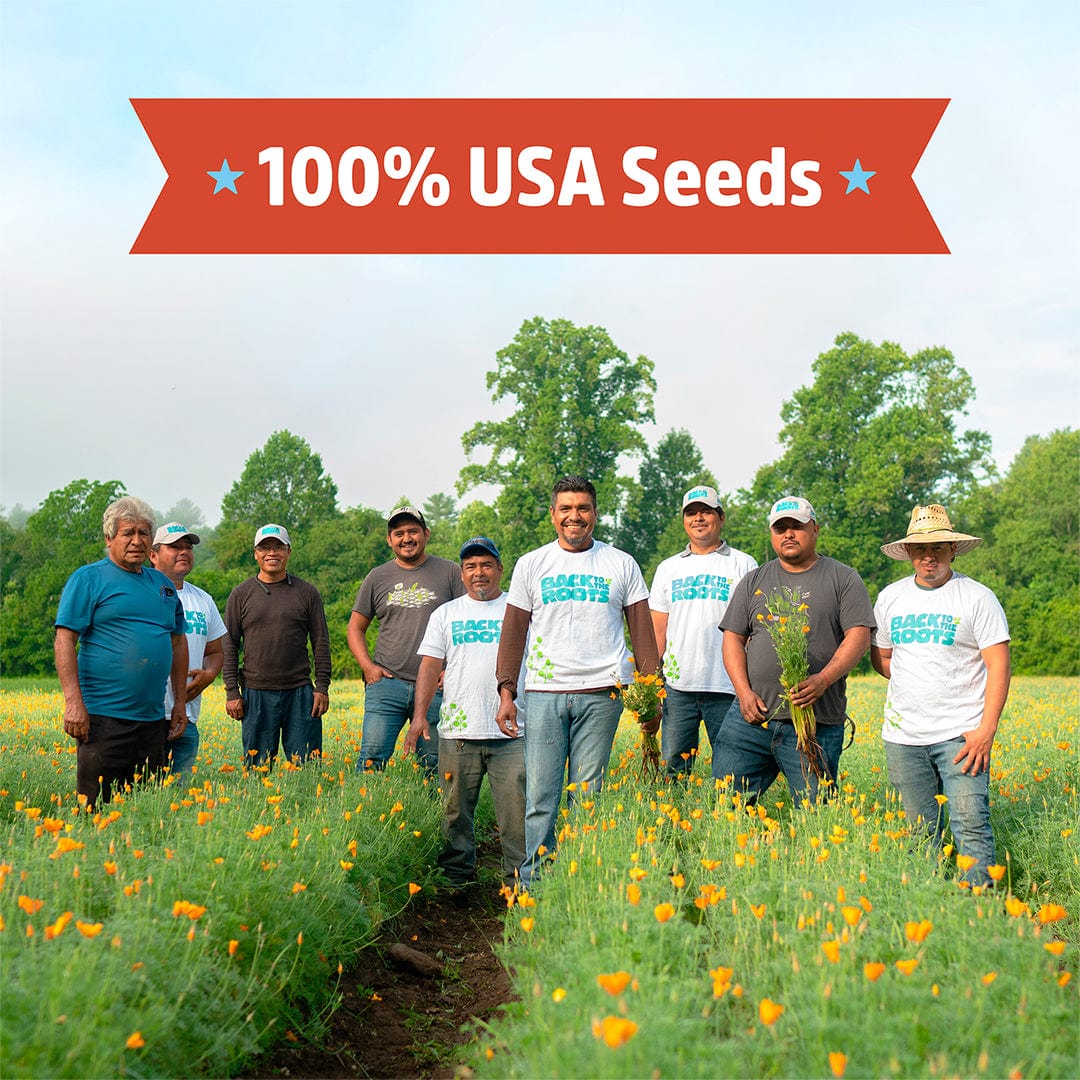

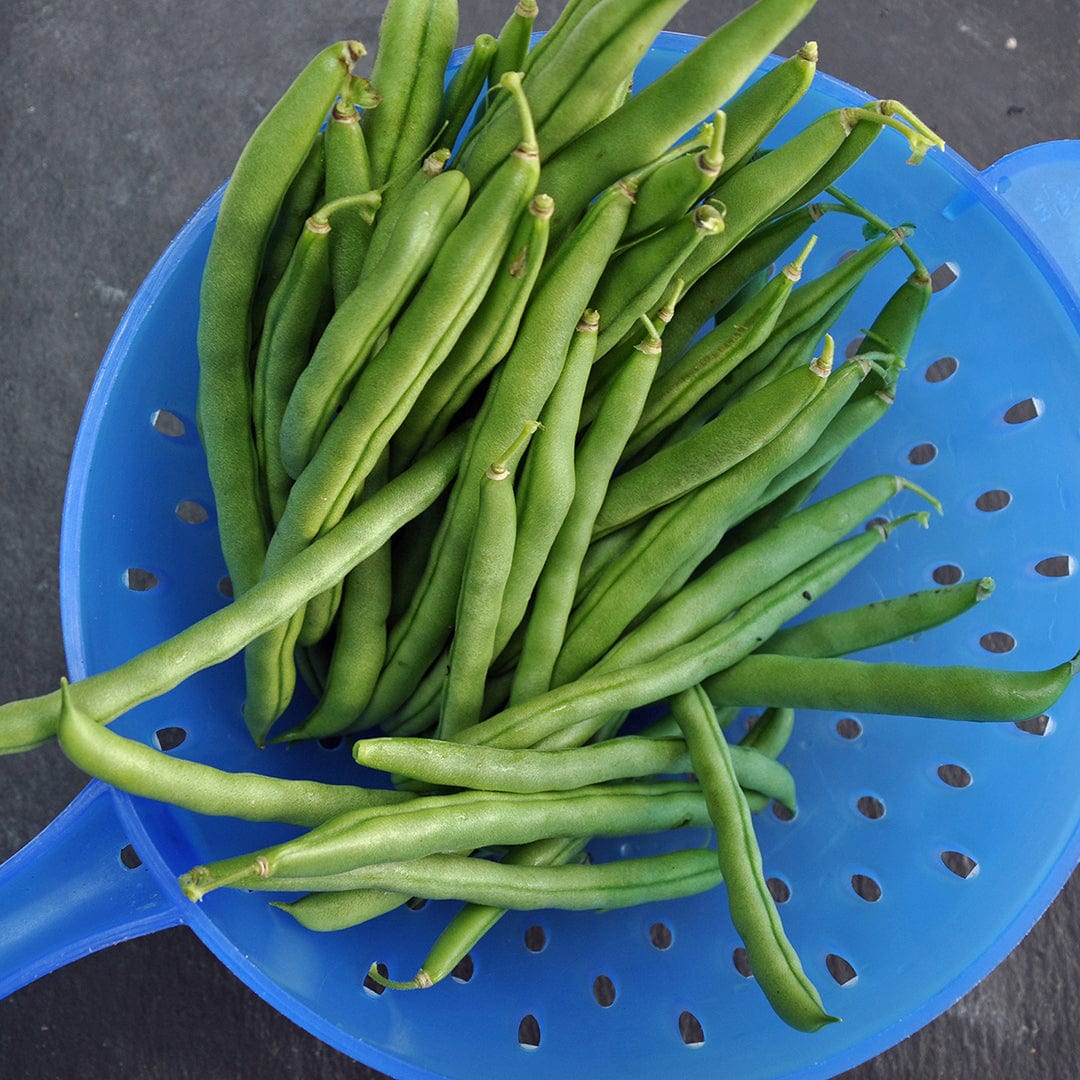
Organic Bean Seeds — 'Blue Lake Bush Green'
Overview
Beans have been a staple food for many cultures and can be enjoyed in the fresh snap, green shell or dry mature stages. They are easy to grow, drought tolerant and productive. The beautiful seeds come in an infinite array of colors, patterns and shapes and have been used as jewelry as well as currency. Beans are high in protein, complex carbohydrates, folate, iron and soluble fiber. In association with Rhizobium bacteria, bean crops enhance fertility by adding nitrogen to the soil.
Beans grow in two different plant habits:
Bush Beans are low-growing with a compact, 1–2-foot-high plant height that do not require support.
Pole Beans (aka vining types) can grow very tall, typically requiring some form of trellising.
Conditions
Beans are a frost-sensitive, warm-season crop. They grow best on well drained, loamy soils with a pH between 5.8 and 6.5. Amend planting areas with compost, phosphorus and potassium. For the best quality beans, provide full sun (6 or more hours of direct sunlight).
Planting
Plant seeds outdoors directly in the garden once warm weather arrives. Use our grow calendar tool to find specific planting dates for your region! Seeds germinate in 7-14 days.
Plant seeds 1" deep, spaced 4-6" apart. For bush-type varieties, no support structures are needed. For vining or pole-type varieties, set up structures shortly after planting. Water well just once at planting time to avoid seed rot. After the seedlings emerge (6–12 days) keep moderately moist, allowing the soil to dry out a bit between waterings.
Care
If beans have not been grown in your garden before, it may be necessary to inoculate bean seeds prior to planting. An inoculant will help your beans form nitrogen-producing nodules on plant roots, allowing them to fix nitrogen from the air into the soil for nutrient use. This symbiotic relationship with beneficial bacteria enriches the soil, results in larger plants, and increases yield.
Pests and Disease
Seed rot and seedling disease due to damping-off pathogens may be a problem in cool soils. Shallow plantings into 60°F or warmer soils will reduce risk of seedling disease. Avoid or minimize potentially devastating White Mold by practicing crop rotation and irrigating early in the day to allow drying of foliage. Bacterial blights of beans can be controlled through crop rotation and composting of crop debris. Encourage beneficial insect activity by planting cilantro and other umbels nearby to help control the many kinds of insect pests that love beans. Spray with pyrethrins and neem oil as a last resort to control heavy infestations.
Harvest
Harvest fresh beans when they’ve reached their desired length, but before they become lumpy and tough. Pick frequently to encourage more production.

Organic Bean Seeds — 'Blue Lake Bush Green'
